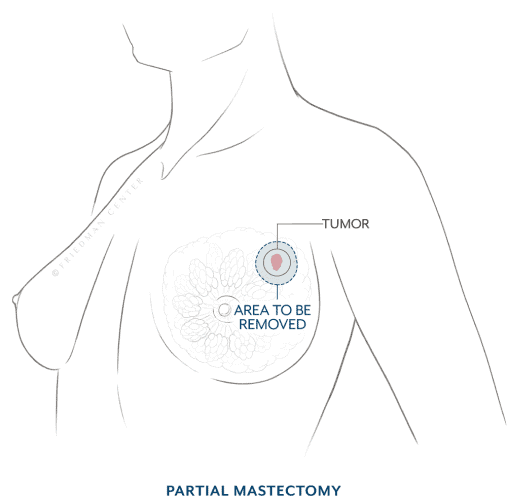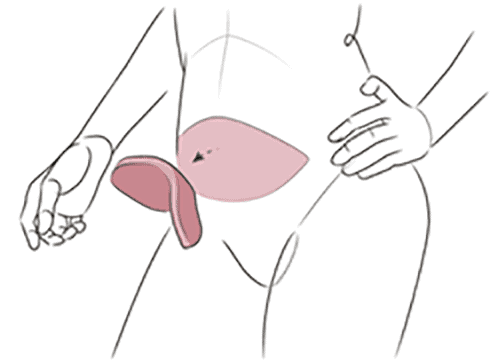Treatment Overview for Breast Cancer » Mastectomy & Lumpectomy » Types of Mastectomy
Types of Mastectomy
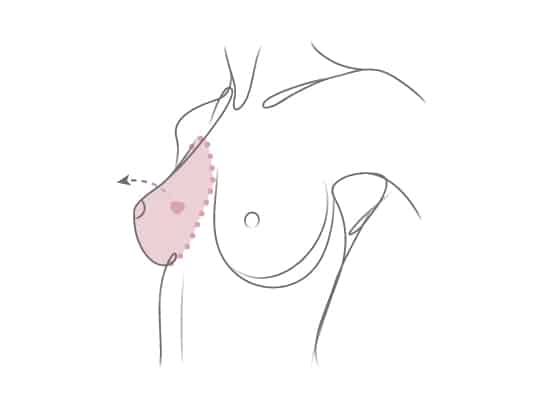
On this page

On this page
In many cases, women are eligible for skin-sparing and nipple-sparing procedures which are at the forefront of breast reconstruction. With a high overall success rate, these procedures preserve natural anatomy and help women to feel whole again.
Mastectomy is often done when the tumor is large or involves more than one part of the breast. It also may be done if radiation treatment is not an option.
Lumpectomy is often recommended for women with early stage cancers who will receive radiation and have adequate breast tissue volume. A lumpectomy procedure, also called breast conservation surgery, involves removing only the portion of the breast that has the tumor along with an adequate margin of normal tissue. Lumpectomy may be done when the tumor is smaller and the breast is larger. Radiation treatment is usually given after lumpectomy to reduce the risk of a cancer recurrence in the remaining breast tissue. Breast surveillance imaging is required after lumpectomy but usually not after mastectomy.
Types of Mastectomy
Skin-Sparing Mastectomy
This procedure—and a variation of it called nipple-sparing mastectomy are the most commonly performed types of mastectomy today. In this procedure, the breast tissue, nipple, and areola are removed, but most of the skin over the breast is left intact. This procedure is only done when breast reconstruction is performed at the same time as the mastectomy. It may not be possible to save the skin if the tumor is near or involving the surface of the breast.
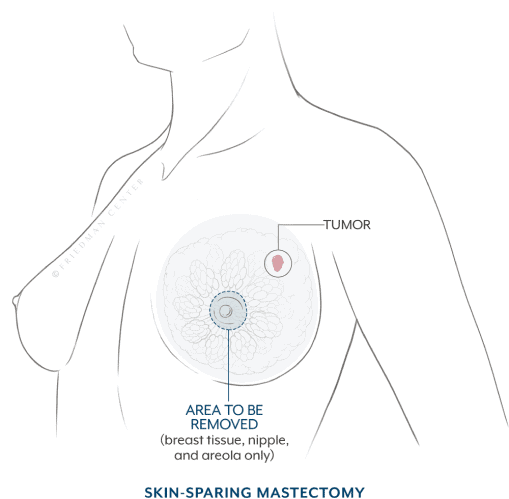
Nipple-Sparing Mastectomy
In this procedure, the breast tissue is removed, but the breast skin, nipple, and areola are saved. A biopsy is usually taken of the tissue directly beneath the nipple, and then the tissue is examined under a microscope by a pathologist to confirm that there are no cancer cells present. Nipple-sparing mastectomy may not be possible or advisable if there are issues with blood supply to the nipple region, if the tumor is very close to or involving the nipple, or if the nipple is not in a good position for reconstruction. Nipple-sparing mastectomy can only be done for women who choose immediate breast reconstruction at the time of mastectomy and can’t be done as a delayed procedure.

Total (Simple) Mastectomy
Also known as a simple mastectomy, a total mastectomy requires the entire breast to be removed, including the excess skin, the nipple, and the areola. It is the most common technique used when breast reconstruction is not being performed. Because excess skin is removed, a total mastectomy results in a flat, straight-line incision. Although this procedure does not remove lymph nodes under the arm, it is frequently combined with a sentinel lymph node biopsy.
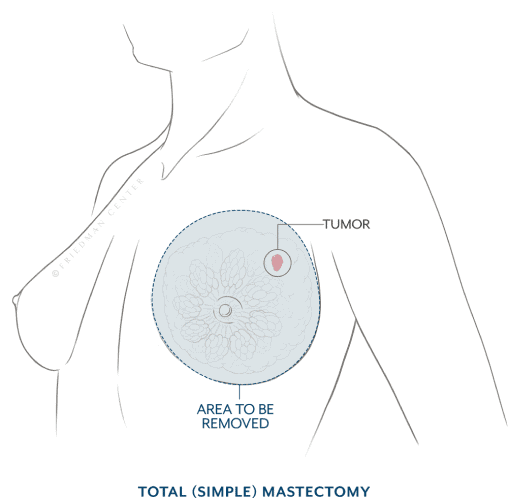
Modified Radical Mastectomy
A modified radical mastectomy removes the nipple, the breast tissue, and lymph nodes from the underarm. The chest wall muscle (pectoralis) is not removed. During the procedure, the surgeon will avoid injuring two specific nerves that help control muscles in the shoulder and back region.
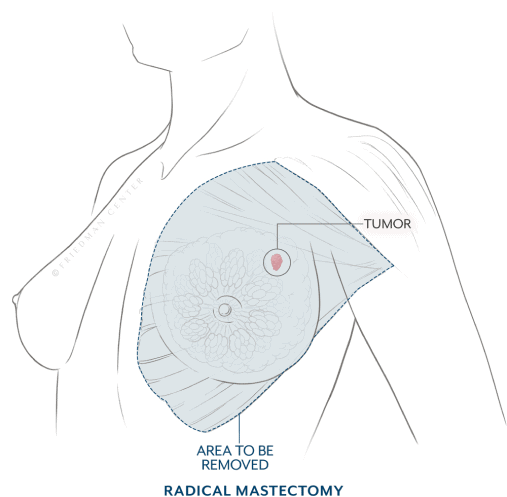
Radical Mastectomy
This procedure was once the standard operation for breast cancer, but it’s now performed only rarely. Radical mastectomy was used prior to the development of modern chemotherapy and radiation therapy. As in the total mastectomy, the entire breast, along with the skin, nipple, and areola are removed. In addition, the lymph nodes in the underarm area and the chest muscles are taken out.

Partial Mastectomy
Also known as lumpectomy and breast conservation surgery, a partial mastectomy removes the cancer tumor along with some of the surrounding normal breast tissue. The rest of the breast remains intact. A lumpectomy is usually followed by radiation therapy to reduce the risk of cancer recurring in the remaining breast tissue. Long-term survival for early-stage breast cancer is the same for those who choose mastectomy and those who choose lumpectomy combined with radiation therapy.
